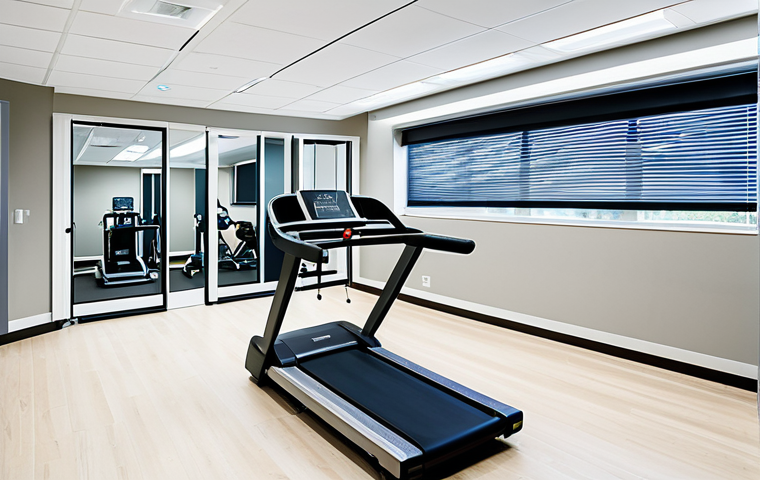So, you’re thinking about diving into the world of freelance sports rehabilitation, huh? It’s a field that’s constantly evolving, with new techniques and technologies emerging all the time.
I’ve personally seen the demand for specialized care explode, especially with the growing focus on preventative measures and personalized treatment plans.
From elite athletes pushing their limits to weekend warriors recovering from injuries, the opportunities are diverse and frankly, pretty exciting. One thing I’ve learned firsthand: building a solid reputation and staying ahead of the curve is key.
Let’s explore this path together, I’ll fill you in on everything you need to know to get started. Let’s get down to the nitty-gritty and learn all about it below!
Alright, let’s get this blog post cooking!
Unlocking Opportunities: Carving Your Niche in Sports Rehab

The world of sports rehab is far from monolithic. It’s a vibrant ecosystem where specialization can be your golden ticket. Think about it: you could become the go-to expert for ACL reconstructions, shoulder impingements in overhead athletes, or even specialize in the biomechanics of runners.
I’ve seen therapists who’ve honed in on a particular area – say, treating dancers or focusing on concussion management – and their practices absolutely thrive.
One therapist I know became renowned for her work with gymnasts, understanding the unique demands on their bodies. She built her entire brand around it!
The beauty of niche specialization is that you become incredibly valuable to a specific clientele, allowing you to charge premium rates and build deep, lasting relationships.
So, don’t be afraid to laser-focus your skills and knowledge; it will definitely pay off.
Identifying High-Demand Areas
Look at what’s trending in the sports world. Are you seeing a rise in pickleball injuries? Are local running clubs exploding in popularity?
Those trends translate into opportunities for specialized rehab services. Dive into research, attend workshops, and network with other professionals to identify these gaps.
One thing I’ve noticed is the increased need for therapists skilled in treating e-sports athletes. They face unique ergonomic challenges, and very few professionals are adequately trained to address them.
Building Authority in Your Specialty
Once you’ve identified your niche, it’s time to become *the* authority. Publish articles in relevant journals or online platforms, present at conferences, and create valuable content for your target audience.
Start a blog, host webinars, or offer free workshops. Share case studies of successful patients you’ve worked with. The more you demonstrate your expertise, the more clients will seek you out.
Leveraging Technology and Innovation
The sports rehab landscape is rapidly evolving, with cutting-edge technologies and techniques emerging all the time. Staying ahead of the curve is essential for attracting clients and delivering the best possible care.
From wearable sensors to advanced imaging techniques, embracing innovation can set you apart from the competition. I’ve been experimenting with virtual reality tools to enhance patient engagement and track their progress.
It’s been a game-changer!
Setting Up Shop: Navigating the Business Side of Freelancing
Being a sports rehab professional is only half the battle. You also need to be a savvy businessperson. This means understanding everything from legal requirements and insurance to marketing and financial management.
I remember when I first started out, I was so focused on the clinical aspect that I completely neglected the business side. It was a steep learning curve, and I made a lot of mistakes along the way.
Don’t let that happen to you! Take the time to learn the fundamentals of running a successful freelance practice. It’s an investment that will pay off big time in the long run.
Legal and Insurance Considerations
Before you treat your first patient, make sure you have all your legal ducks in a row. This includes obtaining the necessary licenses and permits, setting up a legal business entity (e.g., LLC, S-corp), and securing professional liability insurance.
Consult with an attorney and an accountant to ensure you’re compliant with all applicable laws and regulations. Professional liability insurance is non-negotiable.
It protects you from potential lawsuits arising from patient care.
Creating a Business Plan
A well-defined business plan is your roadmap to success. It should outline your business goals, target market, services offered, pricing strategy, marketing plan, and financial projections.
This plan doesn’t need to be overly complicated, but it should be thorough and realistic. Update it regularly as your business evolves.
Financial Management and Bookkeeping
Keeping track of your finances is crucial for long-term sustainability. Invest in accounting software or hire a bookkeeper to help you manage your income and expenses.
Set up separate bank accounts for your business and personal finances. Track your mileage, continuing education expenses, and other deductible business expenses.
Most importantly, set aside money for taxes each month to avoid a nasty surprise come tax season.
Building Your Brand: Marketing and Client Acquisition Strategies
You could be the most skilled sports rehab professional in the world, but if no one knows you exist, you won’t get very far. Effective marketing is essential for attracting clients and building a thriving freelance practice.
I’ve seen therapists with incredible skills struggle simply because they didn’t know how to market themselves. Don’t make that same mistake. Invest in developing a strong brand and implementing targeted marketing strategies.
Developing a Professional Online Presence
Your website is your digital storefront. It should be professional, user-friendly, and optimized for search engines (SEO). Include detailed information about your services, qualifications, and experience.
Showcase testimonials from satisfied clients. Create a blog and regularly publish valuable content related to sports rehab. Use social media platforms like LinkedIn, Instagram, and Facebook to connect with potential clients and build your brand.
Networking and Referrals
Networking is one of the most effective ways to generate referrals. Attend industry conferences, join professional organizations, and connect with other healthcare providers in your community.
Build relationships with physicians, chiropractors, athletic trainers, and coaches. Let them know about your services and expertise. Offer to give presentations or workshops to their patients or clients.
Content Marketing and Educational Outreach
Establish yourself as a thought leader in your field by creating valuable content for your target audience. Write blog posts, record videos, host webinars, and develop infographics.
Share your expertise on relevant topics, such as injury prevention, rehabilitation techniques, and performance enhancement. Offer free workshops or consultations to local sports teams or organizations.
This helps you build trust and credibility with potential clients.
The Art of Client Retention: Providing Exceptional Care and Building Relationships
Attracting new clients is important, but retaining existing ones is even more crucial for long-term success. It’s far easier and more cost-effective to keep a client than to acquire a new one.
Providing exceptional care and building strong relationships is key to fostering client loyalty. I’ve found that clients who feel valued and appreciated are much more likely to return for future services and refer their friends and family.
Personalized Treatment Plans
Every client is unique, with their own individual needs, goals, and circumstances. Avoid a one-size-fits-all approach. Take the time to thoroughly assess each client’s condition and develop a personalized treatment plan that addresses their specific needs.
Regularly reassess their progress and adjust the plan as needed. Involve the client in the decision-making process and empower them to take ownership of their recovery.
Communication and Education
Communicate clearly and effectively with your clients. Explain their condition in easy-to-understand terms. Educate them about their treatment options and the expected outcomes.
Provide them with home exercise programs and self-care strategies. Answer their questions and address their concerns promptly. Make them feel heard and understood.
Follow-Up and Ongoing Support
Don’t just disappear after the last treatment session. Follow up with your clients to see how they’re doing. Offer ongoing support and guidance.
Provide them with resources and tools to help them maintain their progress. Consider offering maintenance sessions or check-ins to prevent future injuries.
Here’s a table showcasing common injuries and potential specialization areas:
| Injury Type | Potential Specialization Area | Example |
|---|---|---|
| Knee Injuries (ACL, MCL, meniscus) | Post-operative knee rehabilitation | Developing accelerated rehab protocols for ACL reconstruction |
| Shoulder Injuries (rotator cuff, impingement) | Overhead athlete rehabilitation | Specializing in return-to-throw programs for baseball pitchers |
| Ankle Sprains | Rehabilitation of runners and endurance athletes | Focusing on biomechanical analysis and injury prevention |
| Back Pain | Spinal stabilization and core strengthening | Developing specialized programs for lower back pain relief |
| Concussions | Concussion management and return-to-play protocols | Offering comprehensive concussion testing and rehabilitation |
Scaling Your Freelance Business: Growth and Expansion Strategies
Once you’ve established a successful freelance practice, you may want to consider scaling your business to reach a wider audience and generate more revenue.
There are several ways to do this, such as hiring other therapists, opening a clinic, or developing online programs. Scaling your business requires careful planning and execution, but it can be incredibly rewarding.
Hiring Associate Therapists
One way to scale your business is to hire other therapists to work under your supervision. This allows you to see more patients and generate more revenue without having to work more hours yourself.
Be sure to carefully screen and train your associate therapists to ensure they meet your standards of care.
Opening a Physical Clinic
Opening a physical clinic can provide you with a dedicated space to see patients and expand your services. This can be a significant investment, but it can also be a great way to grow your business and increase your visibility in the community.
Developing Online Programs and Courses
Creating online programs and courses allows you to reach a global audience and generate passive income. You can create courses on topics such as injury prevention, rehabilitation techniques, and performance enhancement.
These courses can be sold through your website or through online learning platforms like Udemy or Teachable.
Staying Ahead of the Curve: Continuing Education and Professional Development
The field of sports rehab is constantly evolving, with new research, technologies, and techniques emerging all the time. To provide the best possible care for your clients, it’s essential to stay up-to-date on the latest advances in the field.
This means engaging in continuing education and professional development activities on a regular basis.
Attending Conferences and Workshops
Attending industry conferences and workshops is a great way to learn about the latest advances in sports rehab and network with other professionals. Look for conferences and workshops that focus on your areas of interest and expertise.
Reading Research Articles and Journals
Stay informed about the latest research findings by reading research articles and journals. Subscribe to relevant publications and regularly review the latest articles.
Obtaining Advanced Certifications
Consider obtaining advanced certifications in areas such as orthopedic manual therapy, sports physical therapy, or strength and conditioning. These certifications can enhance your skills and knowledge and demonstrate your commitment to professional development.
Wrapping Up
The path to success in freelance sports rehab is paved with passion, expertise, and a strong business acumen. It’s about finding your niche, building your brand, and providing exceptional care to your clients. Embrace the challenges, celebrate the successes, and never stop learning.
Useful Information to Keep in Mind
1. Pricing Your Services: Research local market rates and factor in your experience, specialization, and overhead costs. Consider offering packages or tiered pricing to cater to different budgets. Don’t undervalue your expertise!
2. Continuing Education Resources: Look into reputable organizations like the American Physical Therapy Association (APTA) or the National Strength and Conditioning Association (NSCA) for continuing education opportunities and certifications. Online courses from platforms like MedBridge are also great resources.
3. Essential Equipment for Your Practice: A portable treatment table, basic exercise equipment (resistance bands, weights), and assessment tools (goniometer, tape measure) are essential to get started. As you grow, you can invest in more advanced equipment like ultrasound machines or electrical stimulation devices.
4. Building a Referral Network: Attend local fitness events, volunteer your services at community sporting events, and connect with local physicians and athletic trainers. Offer to give lunch-and-learn sessions or workshops to their staff or patients. Word-of-mouth is powerful!
5. Utilizing Social Media Effectively: Create a professional social media presence on platforms like Instagram or LinkedIn. Share informative content, patient success stories, and behind-the-scenes glimpses of your practice. Engage with your audience by responding to comments and questions. Don’t be afraid to show your personality!
Key Takeaways
Niche Down: Specialization is key to standing out and attracting high-paying clients. Focus on an area of sports rehab that excites you and aligns with your skills and experience.
Business Savvy: Running a successful freelance practice requires strong business skills. Take the time to learn about legal requirements, insurance, marketing, and financial management.
Client-Centric Approach: Provide personalized treatment plans, communicate effectively, and offer ongoing support to build strong relationships and foster client loyalty.
Continuous Learning: Stay up-to-date on the latest advances in sports rehab by engaging in continuing education and professional development activities.
Embrace Technology: Utilize technology to enhance patient care, improve efficiency, and streamline your business operations.
Frequently Asked Questions (FAQ) 📖
Q: What specific certifications or licenses are essential for a freelance sports rehab specialist in the US, and where can I get them?
A: Okay, so legally, you’re going to need to be a licensed Physical Therapist (PT), Athletic Trainer (ATC), or sometimes even a Chiropractor (DC) depending on the state you plan to practice in.
For PT, you’ll need to graduate from an accredited Doctor of Physical Therapy (DPT) program and pass the National Physical Therapy Examination (NPTE).
Look for programs accredited by the Commission on Accreditation in Physical Therapy Education (CAPTE). Athletic Trainers need to graduate from a CAATE-accredited program and pass the Board of Certification (BOC) exam.
Chiropractors need a Doctor of Chiropractic degree and to pass the National Board of Chiropractic Examiners (NBCE) exams. Honestly, it’s crucial to check the specific requirements for the state you’re targeting; each one has its own nuances when it comes to practice scope.
Getting that initial certification is just the start; continuing education is a must in this field!
Q: How do I find clients when I’m just starting out as a freelance sports rehab specialist, especially when I don’t have a big network yet?
A: That’s a tough one, but definitely doable! When I was getting my feet wet, I focused heavily on building relationships. First, I volunteered at local sporting events – high school games, marathons, even smaller community leagues.
It gets your name out there and lets you practice your skills. Second, connect with local gyms, fitness centers, and sports clubs. Offer to do workshops on injury prevention or recovery strategies.
Gym owners are always looking for ways to add value to their memberships. Thirdly, don’t underestimate the power of social media! Create a professional profile showcasing your expertise, share useful content (think exercise tips or injury insights), and engage with your local sports community.
Honestly, word-of-mouth is gold in this business. Happy clients will become your biggest advocates!
Q: What are some crucial things to consider when setting my rates as a freelance sports rehab specialist, so I’m competitive but still value my expertise?
A: Rate-setting is always a tricky balancing act. I’d start by researching the average rates charged by other sports rehab professionals in your area. Websites like Thumbtack or even a quick Google search can give you a general idea.
But don’t just blindly follow the average. Consider your experience level, your specialized skills (like if you have certifications in a particular technique), and the type of service you’re offering (in-person vs.
virtual, individual session vs. package deal). Don’t be afraid to charge a bit more if you have unique expertise or offer a premium service.
Also, factor in your overhead costs – things like travel expenses, equipment costs, and insurance. Finally, remember your worth! Confidence in your abilities translates to client confidence, and they’re more willing to pay for quality.
And it’s better to start at what you believe your services are worth and adjust down if you need to, instead of selling yourself short in the beginning.
📚 References
Wikipedia Encyclopedia
구글 검색 결과
구글 검색 결과
구글 검색 결과
구글 검색 결과
구글 검색 결과






